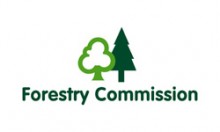
News
New Forestry Commission Publications - Green Infrastructure | Climate Change | Trees

| Date | Thursday, November 11, 2010 |
|---|---|
| Topic | Economy Historic Environment Biodiversity & Natural Environment Greenhouse Gas Emissions & Climate Change Sustainable Development Environment Infrastructure Quality of Life |
The following reports have recently been published by the Forestry Commission.
Green infrastructure
Forest Research scientists have recently completed a critical review of the evidence on the ‘Benefits of green infrastructure’ funded by the Department for Environment, Food and Rural Affairs (Defra) and Communities and Local Government.
A summary report has been produced providing a synthesis of the evidence on the positive benefits which green infrastructure brings to society, based on sound research and evidence. It supports decision-making on green infrastructure and highlights cost effective opportunities to achieve the delivery of local and national policy objectives. The report shows how well-planned and managed green infrastructure can deliver multiple benefits to local authorities, communities and businesses.
An in-depth technical report supports the summary report by providing a full critique of the current evidence; alongside a series of supporting evidence notes; and case studies, that detail examples of where green infrastructure has been successfully used to provide economic, social and environmental benefits.
Climate Change
A Research Note published by the Forestry Commission suggests that tree species such as alder and Norway spruce are likely to become less able to grow in the South East with hotter drier summers predicted in the future. The research suggests oak, sweet chestnut and the less well known hornbeam may be better suited to the future climate in the region.
The Research Note evaluates the likely impacts of future climate changes on trees, woodlands and forests in the UK based on low and high emission scenarios of greenhouse gases (GHGs) in the middle and towards the end of the century. It provides guidance on the action required to ensure woodlands in the south are resilient to increased risk of drought stress and other climate changes in the next 40 to 70 years.
The Case for Trees
There is a growing recognition of the importance of trees in the places that we live and work. They provide benefits for us in many ways. Here are just a few:
- Trees absorb and store carbon and so help us in the fight against climate change
- Trees provide shade and cool our urban centres
- Trees reduce the impact of heavy rain by slowing flood water
- Trees are home to many species of insects and birds and urban trees act as a platform for biodiversity
- Trees improve air quality by absorbing pollutants
- Trees have a positive effect on property prices
This document aims to inspire people involved in planning policy and practice to become champions and advocates for trees.
For more information on these reports and the work of the Forestry Commission please visit either www.forestry.gov.uk/yorkshireandthehumber or www.forestresearch.gov.uk/
You may have found us by using the following keywords: Our Climate, Climate Change Partnership, Climate Change, Regional, Adaptation Sub-Group, Adaptation, Local Authorities, Strategy and Monitoring, Built Environment, Transport, Health Services, Business, Land Management, Citizen Engagement, Energy, Waste, Water, Carbon, Flood risk, Mitigation, Leadership, Low Carbon Products, Low Carbon Services, Zero Carbon, Integrated Regional Strategy, Yorkshire and Humber Strategy, Climate Change Act, Regional Adaptation Study, Climate Change Plan for Yorkshire and Humber, Climate UK, Regional Coordinator, Low Carbon Economy, Bio-mass, Carbon Capture, Microgeneration, Local Area Climate Change Network, YoHr Space, Climate Change Board, Impacts, Vulnerability, Opportunities, CO2, NI188, NI186, NI185, NI187, Temperature, Rainfall, Extreme weather





